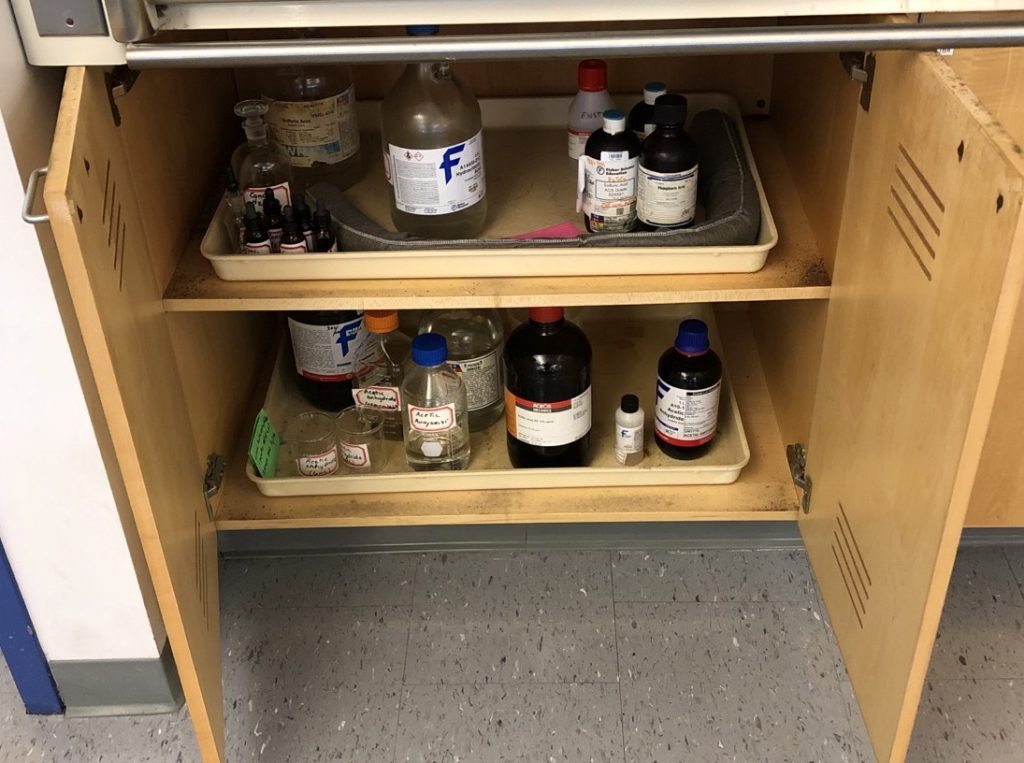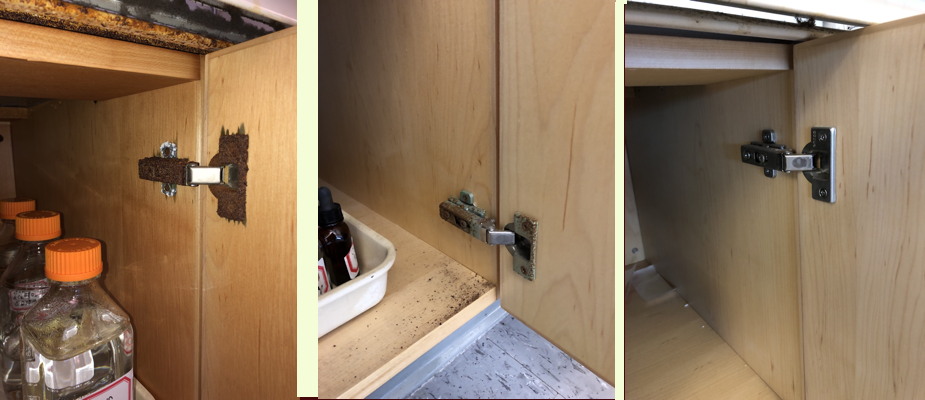While talking with our chemistry lab coordinator about the best approach to organizing their chemical storage cabinets, I made an interesting observation that might be of interest to other laboratory workers and safety professionals.
Our laboratory building was renovated in the 2004 and the labs were newly constructed then. So the cabinetry is about 14 years old, which I consider relatively new for laboratory architecture and casework.
The chemical storage provided under the fume hoods in our teaching labs consist of two wooden cabinets – one for storage of corrosive chemicals, which is ventilated, and the other for storage of flammable cabinets, which is not (see Figure 1).

Figure 1: Fume hoods and storage cabinets; ventilated corrosives cabinet on left and unventilated flammables cabinet on right
One particular cabinet has been used for long term storage (i.e. more than one year) of a variety of concentrated acids. While we were looking inside that cabinet, we noticed that the hinges had corroded in an interesting way (see Figure 2).

Figure 2: Upper hinges of the acid storage cabinet were significantly more corroded than the lower hinges. See graphic at top of the page for a close-up view of the various hinges. From left to right is the upper hinge and lower hinge of the acid storage cabinet; the third hinge was in an adjacent corrosives cabinet.

Figure 3: On closer inspection, we realized that the ventilation provided for the cabinet only served the lower shelf. While both shelves stored similar amounts of acids, the ventilation provided was not serving the top shelf well. And 10 or so years of acid storage had taken a toll on the cabinet’s hardware.
I learned three things from this observation:
- Air moves where it wants to, not where you think it will (see, for example, the presentation on air flow in flammable storage cabinets done at NIOSH and presented at the CHAS fall meeting in 2017).
- Volatile chemicals don’t stay in their containers as long as you think they might. A Sigma-Aldrich representative once told me that they expected their caps to contain volatile chemicals for about a year.
- Planning your long term chemical storage involves a variety of considerations beyond chemical compatibility – air flow patterns among them.
I’d be interested to hear if from people have similar war stories or other practical observations related to chemical storage in labs.
Ralph Stuart, Chemical Hygiene Officer
Keene State College
ralph.stuart@keene.edu

